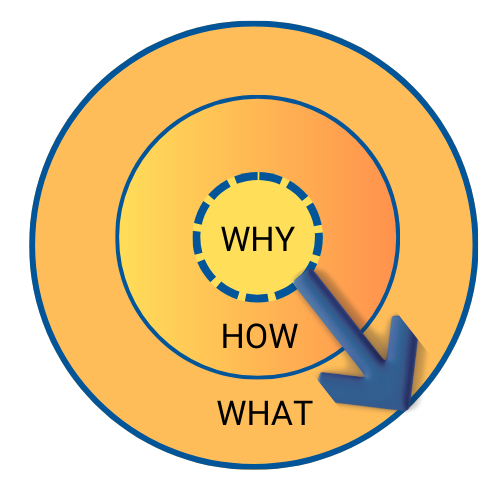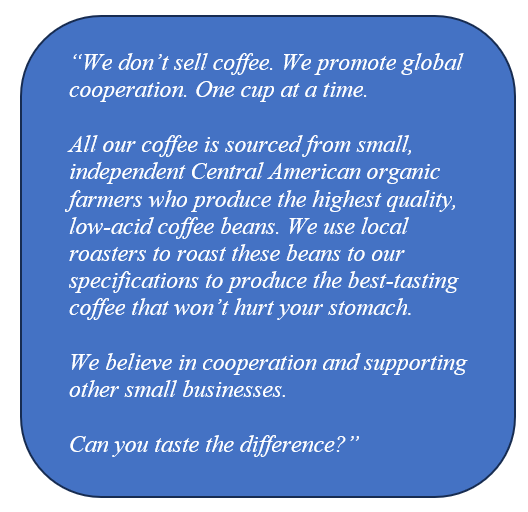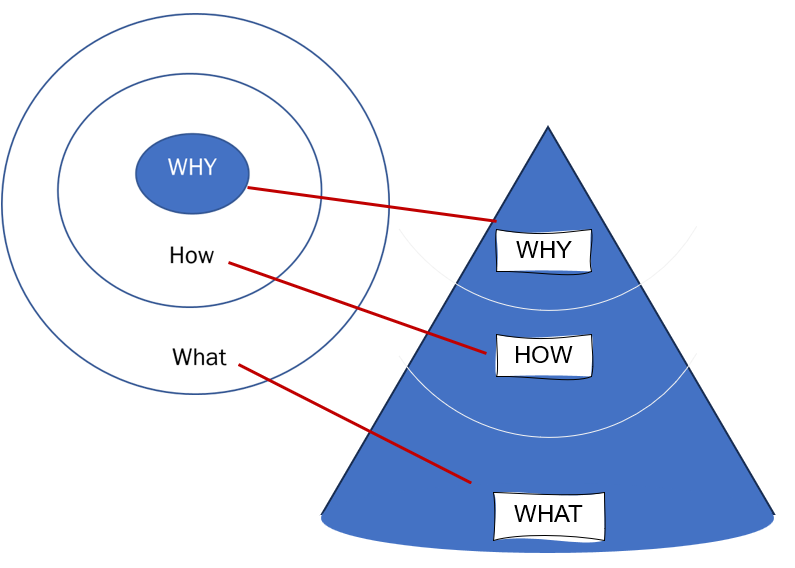How to Build an Amazing Culture in an Organization of Any Size
A review of Simon Sinek’s Book, Start With Why
Why do some companies build an amazing culture and others don’t? In Simon Sinek’s book, Start With Why, he explains why and how some companies can build a truly amazing culture where employees want to come to work and customers choose to be loyal, even paying premiums for the company’s products and services.
According to Sinek, the WHY relates to an organization’s or a leader’s values and purpose. If a leader can articulate their purpose and values, others who believe in those values and purpose will support them and join them. This creates a strong culture where everyone is working towards the same higher purpose. People are excited to come to work and customers go out of their way to buy that company’s products and services.
People don’t buy WHAT you do. People buy WHY you do it.
That’s the premise of Sinek’s book. He discusses what he calls “The Golden Circle” depicted below. We all have a good idea of WHAT we do and HOW we do it. That tends to be what we articulate in our social posts, ads, and on our websites. The WHY, though, is the more difficult and challenging to articulate. But this is the reason people buy from you. It’s WHY you do what you do; not WHAT you do that attracts your loyal customers. The goal, then, is to promote from the inside out. Start with WHY, then communicate HOW, and then talk about WHAT.
Throughout his book Sinek gives examples of companies we all know – Apple, Southwest Airlines, TiVo, and more – that succeeded or didn’t because they either knew their WHY and articulated it or they didn’t. Apple and Southwest know their WHY. They just happen to produce computers or provide an economic means of travel for the common person. TiVo may have a great product, but they never communicated their WHY. It appears they are still selling their WHAT on their website as it’s all about their product features. It doesn’t speak to WHY someone should buy their product. It describes lots of WHAT’s.
By contrast, the home page on the Apple website welcomes you to the “era of spatial computing”. Even the promotion for iPhone 15 promotes their WHY in the simple statement: “New camera. New design. Newphoria.” The Watch is all about “Next level adventure.” That’s the WHY, not the WHAT. It appeals to those “Innovators” and “Early Adopters who seek excitement and adventure and have the desire to be the first to have the latest and greatest.
According to Sinek, companies do best when they promote and communicate their WHY, their purpose, their reason for being in business, and target that communication to the “Innovators” (about 2.5% of the population and the “Early Adopters” (13.5% of the population). These are the people who believe what you believe and will follow your purpose (your cause) because it resonates with them. They are the ones who stand in line to get the latest Apple phone or watch, who buy yet another set of earbuds because they’re the latest thing with more and better features. But they don’t just buy any earbuds or phones or watches. They buy the Apple brand because they believe in the cause, their vision: “To make the best products on earth and to leave the world better than we found it.” Now that’s a cause.
Don’t market to the middle comprised of the Early and Late Majority, says Sinek. That’s expensive and they won’t buy until they have seen and heard what the Innovators and Early Adopters have to say about your product or service. (See the bell curve graph below.)
The “Early Majority” (another 34%) will wait to see what the Early Adopters have to say before taking a chance on your product or service. They are the ones who look at the reviews and do the research before deciding to buy. The “Late Majority”, another 34%, will wait even longer until the bugs are worked out and the reviews are more plentiful. Then they may get on board. Then there are the “Laggards”. These comprise another 16% who take the approach “If it still works, why change?” They are ones who continue using old computers with Windows 7 or 8 because it still works. Why upgrade and have to learn about Windows 11 if the current computer does everything they need?
Let’s use a case example of an imaginary coffee shop
They’ve been in business 2-3 years. They source their coffee from local roasters who buy organic, low-acid, shade-grown coffee beans from Central American countries. The roasters then roast the coffee to produce the perfect level of acidity, flavor, and caffeine for a variety of coffee types. This isn’t much different from other coffee houses that claim to have great coffee. It may differ from Starbucks, but they aren’t selling coffee, they sell “an experience”. Their stores are set up to invite customers to stay awhile, read a book, or meet friends and business partners while enjoying a satisfying cup of coffee and a snack.
If this coffee house wants to differentiate itself, it might focus on a cause that speaks to people seeking not just a good cup of coffee but a reason to go to this coffee house instead of Starbucks or the nearest drive-thru. Maybe the WHY might be “To create a culture of cooperation one cup at a time.”
The cooperation comes from supporting small coop farmers in other countries who produce the organic, low-acid coffee beans they buy from the local roasters, another form of cooperation. They aren’t just selling coffee. They’re creating a culture. That’s their WHY. It speaks to customers who believe in that culture and vision.
Their HOW is by sourcing products from small Central American farmers and local roasters thereby supporting the local economy.
Their WHAT is producing a high-quality, great-tasting cup of coffee that is delivered by friendly workers who love what they do and can describe the difference their coffee makes and also the difference among the various roasts.
Their promotion might be worded something like the text below in the blue box.
There’s more that can be done beyond just selling coffee. They can offer specialty breakfast, lunch, and dessert items that pair well with coffee. They might provide a pairing menu that matches certain blends or types of coffee (dark, light, medium, fruity) with different foods from sweet to spicy. That would be a differentiator. They can cooperate with local bakeries to sell their pastries, sandwiches, and desserts. They might lease a space that looks and feels more like a cozy living room with quiet, comfy seating areas away from crowds as well as 4-top tables conducive to small group gatherings.
How might you define your own WHY, HOW, and WHAT? What’s your Golden Circle?
Further in the book, Sinek mentions that the Golden Circle is not just that, it’s actually the top of an inverted triangle looking at it from the top down (see image below).
When you think of this structure from an organizational perspective, says Sinek, the top of the cone represents the WHY. This is the CEO, the leader, the person who provides the vision for the organization, the strategic direction, and the organization’s purpose.
The second section, the HOW, represents the senior executives and leaders who are charged with executing that vision. They direct the HOW we do things around here. They come up with “the plan” of actions required to achieve that vision.
The third section, the WHAT, represents the rest of the organization, the workers and their bosses, who produce the products and services the organization provides.
It’s easy to see this structure when you look at large organizations with thousands of employees. You may even have worked in a few of them before setting out to create your own business.
However, as CEO of a small business with fewer than 10 or 20 employees, you can still look at your organization from this perspective. Your job is to set the vision, the strategic purpose, the WHY you are in business, and communicate that to your staff. Depending on the size of your business, you may have one or two who are your senior leaders. Their job is to come up with the plans to execute your vision. You may have a marketing director, a CFO or Financial Manager, and an HR person. They each will create their own plans for your review and approval to execute the vision. That’s the HOW. Their job is to communicate that to the rest of the employees who produce the WHAT, the products and services you sell to your customers. They make things happen based on the plans created to support the CEO’s vision.
I invite you to try this concept out and see if it makes a difference in your business. You won’t see results overnight, but you might within 6 to 9 months. Let me know how and if this strategy works for you. You can reach me at je**@de*********.com. I look forward to hearing about your experience.




